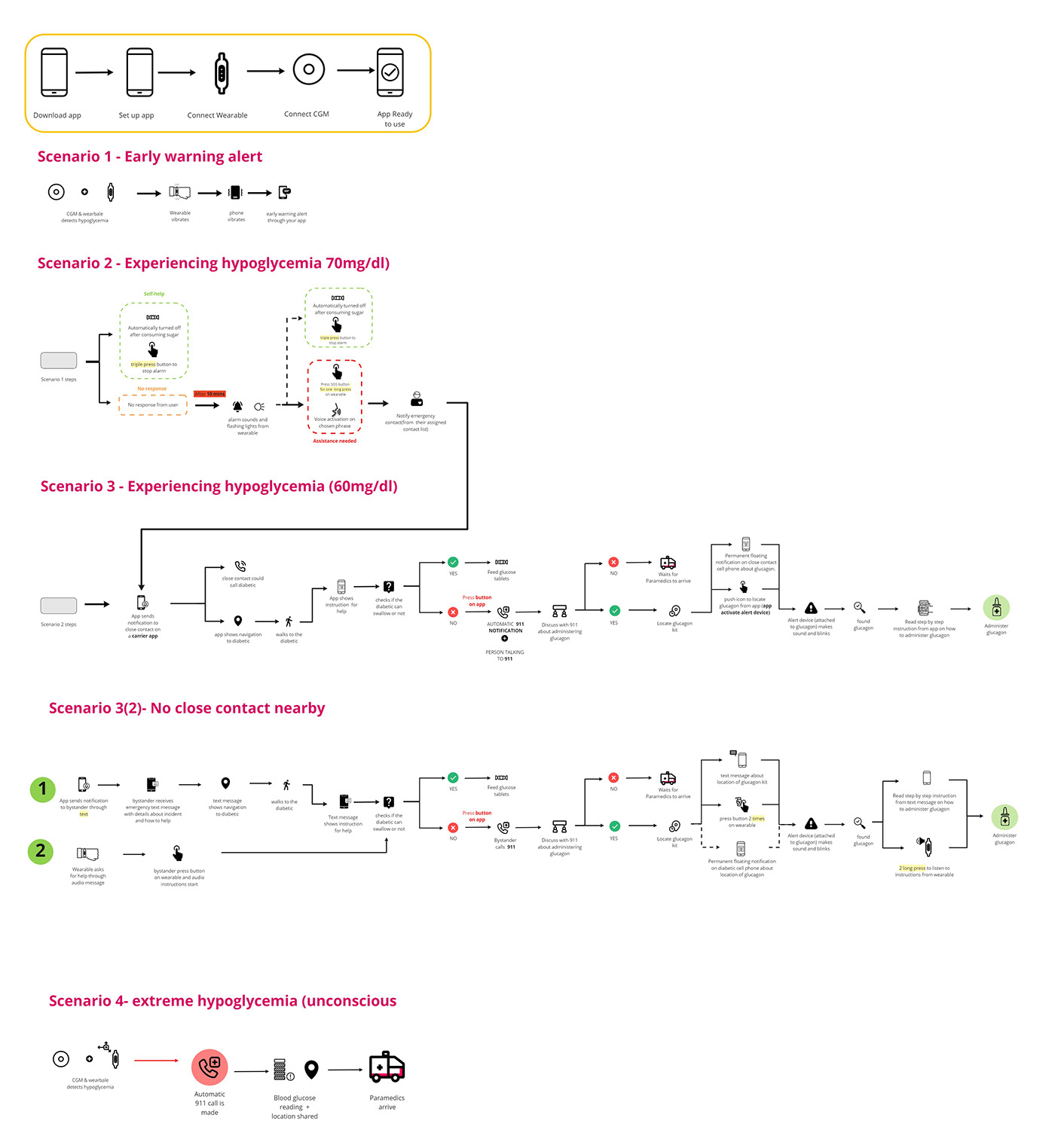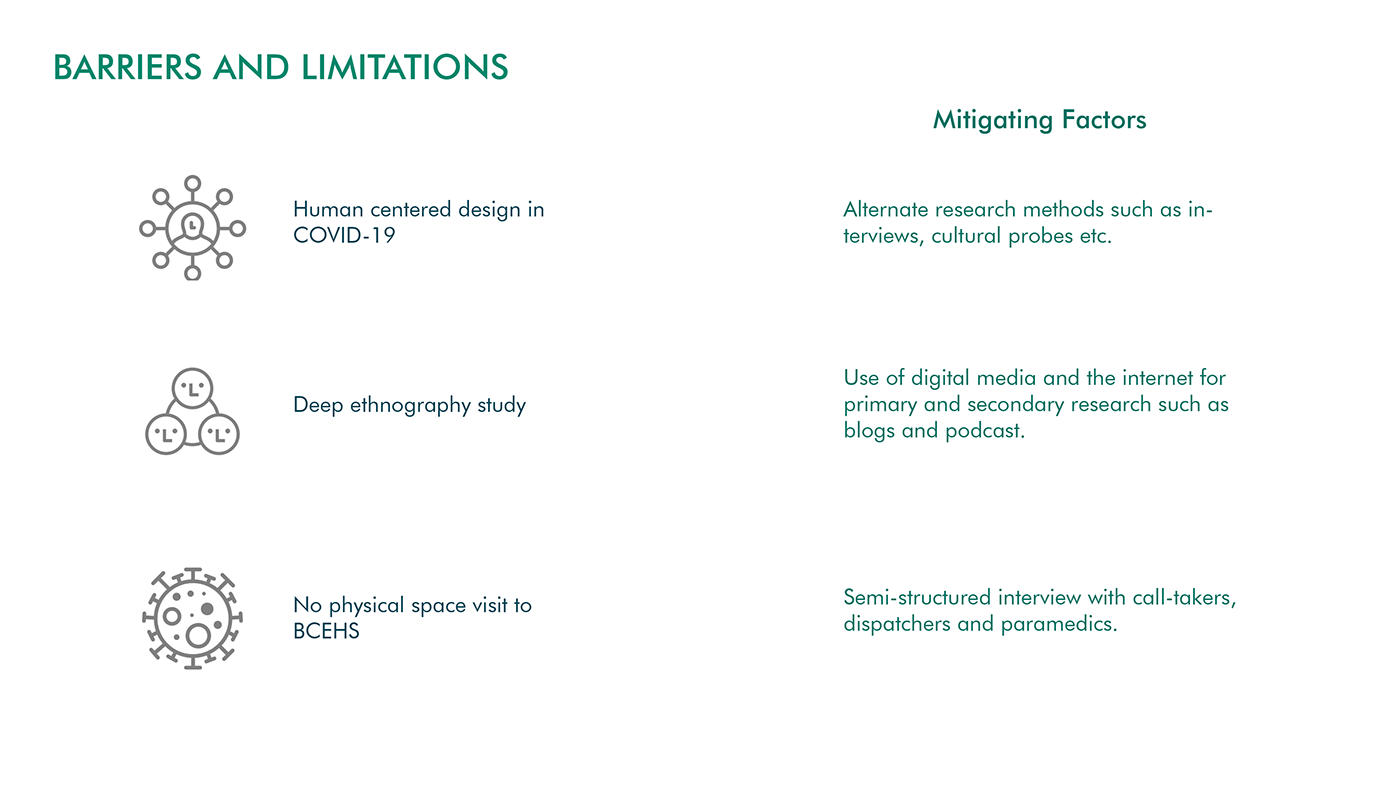
What is type 1 diabetes ?



Diabetes research and health care generally have been divided into two distinct phases for receiving medical care: pediatric and adult. The transition period between pediatric and adult care occurs in late adolescence. The next developmental stage of life is emerging adulthood, and the population in this bracket are emerging adults. This stage of emerging adulthood has not been considered extensively in managing chronic illness (Paone & Whitehouse, 2011). Yet, this is a critical time when a person not only assumes responsibility for their diabetes self-care but also faces usual challenges other young adults face.
To start off, I looked into existing research material. The list of resources comprises mostly of academic studies, online blogs, podcasts, and online discussions. After reviewing these resources, I did an affinity mapping that reflected my understanding of different challenges faced by young adults in transition.

To gain a deeper understanding of the user, the primary and secondary research collection seeks to answer the following research question:

PRIMARY RESEARCH
Secondary research has identified various challenges and gaps faced by young adults living with type 1 diabetes. These challenges necessitated human-centered research to gather a deeper understanding of the user (young adults) and various perspectives from experts in surrounding fields.

The research methodology focuses on human-centered design research practices, an assortment of tools and methods that create a space where we acquire a profound empathy with the stakeholders in a particular situation by putting them at the core of the research process and ensuring they have a voice. This user engagement brings about more inventive results, a superior “fit,” and higher acknowledgment rate of intended solutions than traditional design methodologies. (Health Design Lab. 2016)
To further reveal the stakeholder’s knowledge various HCD methodologies were used. These included collaboration with young adults living with type 1 diabetes through surveys, interviews, cultural probes and co-creation workshops.
Research Methods

Analysis



Design Direction
This exploratory research yielded much useful information. To further proceed with one design direction, I decided to work on the incidence of hypoglycemia (low blood sugar) and helping T1D young adults during extreme hypoglycemia. In an article published in the Healio Journal regarding fear of hypoglycemia in young adults, Phil Neuffer states that caring for young adults should include minimizing their worries about diabetes, including reducing fear of hypoglycemia. It also talks about how this fear damages the quality of life for young adults, and the goal should be to achieve a high quality of life while minimizing worries about diabetes (“Hypoglycemia fear damages quality of life for young adults with type 1 diabetes,” 2018).


After persona development, I did scenario mapping, representing the different scenarios where hypoglycemic condition arises and its treatment. This helped in building a better understanding of the user’s current experience and identified opportunities for improvement



They represent the user’s action, feeling, and thinking in each case. This helped in revealing pain points and design opportunities at each step of the scenario allowing a comprehensive needs assessment
To generate the ideas, the users were invited in the creative process. Co-creation sessions were valuable in communicating and gathering individual perspectives directly from users and it was about developing the solution collaboratively. Four participants came together in a digital space (MIRO), where two scenarios were presented. Each scenario showed multiple situations through sketches. Scenarios were discussed with the group, and participants voted on the preferred ideas along with suggesting more ideas and giving more detailed responses on sticky notes.

Simultaneously I interviewed paramedics, emergency call-takers and dispatchers from British Columbia emergency health services which yielded specific field insights.

After developing a deep understanding of the user’s needs and wants through the research activities, several concepts were developed to assist the young adults during hypoglycemic episodes. The proposed solution builds on the existing diabetic devices being used by young adults, CGM.


The wearable device (1) acts as a personal alarm device to alert people and guide them through the life-saving process in emergencies. It works in conjunction with an existing CGM and is based on the CGM readings. The wearable has an SOS button to report a possible emergency condition, which activates by long-pressing two times.
The smart wearable integrates with any CGM device through a digital application using Bluetooth technology. It alerts emergency contacts through a carrier app and bystanders through mass text notification which doesn’t require an embedded app. The app initiates an automatic voice call to medical emergency service if required.
The alert device attached to the emergency glucagon kit has a signal LED and a speaker representing the alerting system. As soon as the button is pressed on the wearable or through the app to locate the emergency medication, it starts blinking and beeping, making it easy for the attendant to search and administer the medication based on the app or text instruction notification. The solution is based on nasal glucagon which is commercially available in the market and is easy to use as opposed to injectable glucagon.

System Map
The system map explains how the concept work in different scenarios.

Further, I did various ideation to explore the shape, form and function of the wearable and alert device.

Following the concept development phase, I presented the ideation sketches to the three participants in an individual online session. The sessions started with asking them some questions for which the participants provided answers and suggested more promising solutions after evaluating the idea.





Savr : A personal alarm system to guide people through emergency life saving assistance caused by severe hypoglycemia in type 1 diabetic patients


1. Smart Wearable Device






2. Alert Device






3. App




Thank you for viewing.
To know more, feel free to email me.
Kunal26gpt@gmail.com




